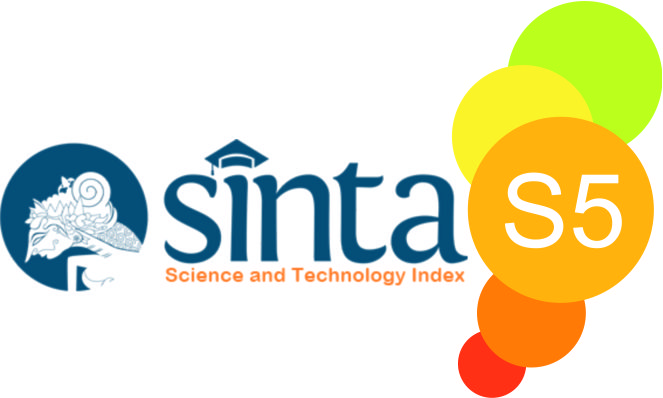TEACHING EXTENSIVE LISTENING DEVELOPING RECOUNT PARAGRAPH WRITING
An integrated Learning to Meet the Intention, Preference and Benefit for Students of English Study Program FKIP Unpatti Ambon
Abstract
This study aimed to facilitate students in an integrated learning approach to meet the purpose of teaching and learning. This listening–writing integrated teaching data was a survey research designe, to identify the intention, preference and benefit of students. The study aimed also to identify the case of theoritical proposition and the field practice. The data was taken from 58 English education study program students of 4th semest, those who were in the treatment of the teaching approach. Students’ responses to the questionnaires was in order to answer 2 research questions: what are students intentions, preferencec, and the benefits, and other suggestions of students toward the teaching approach. The data of research provided in approaching of Likert’s scale in the renge of 1 (strongly agree) to 5 (strongly disagree). However the questionnaires were designed more in positive view points towards the implementation rather than in negativesites. The questionnaire data was analysed using descriptive statistical operaion to see the average number of students’ responses and the frequency toward each of three points. By data analysis, the result shows that, 30 student (51,7%) strongly agree, 25 students (43,1% agree) 2 student 3,4% neutral, 1 student (1,7%) disagree to the intention. There were also 20 students ) 34,5% strongly agree, 33 (56% agree), 5 (8,6% neutral and none disagree for preferences, while, 12 (20,7% strongly agree, 41 students (70,7%) agree, 5 students (8,6%) neutral and none dis/or strongly agree with the benefit. Even in a quite strong data, but there were also great number of studsent complain in their hand writing note data. The complains are in the cases that (a) writing is difficult so, it should not be in parallel with listening, (b) writng created boringness, and their proportion of changing this (integrated) approach. From the two data, the possible conclussion is that there was benefit for the integrated listening-writing but a fully and detail explanation should have than become the consern on the awarenes of student
Downloads
References
Coffin. Caroline et all. 2003. Teaching Academic Writing A Toolkit for Higher Education. Routledge. 11 New Fetter Lane, London.
Creswell. John W. (2008) Research Design Qualitative, Quantitative, and Mixed Methods Approaches SAGE Publications, Inc (2008)
Henning. Elizabth. Sarah Gravett 2005. Finding Your Way in Academic Writing. Second Edition Van Schaik Publisher (2005).
Hill. McGraw. 2006. Teach Terrific Writing Grades A Complete Writing Program for Use in Any Classroom Teacher Resources. Gary Robert Muschla. 2006.
Hitchings. Henry 2011. The Language Wars Ahistory of Proper English. John Murray Publisher Hachette UK Company.
Hyland. Ken. 2010. Teaching and Researching Writing (2nd Edition) Applied Linguistics in Action. Pearson ESL (2010).
Orrell et all. 2010. Work Integrated Learning Aguide to efective practice. Routledge 2 Park Square, Milton Park, Abingdon. Oxom. Ox144RN.
Sahu. Pradip Kumar. 2013. Research Methodology: A Guide for Researchers in Agricultural Scirnce, Social Science and Other Related Field. Springer Yew Delhi Heidelberg Yew York Dordrech London.
Smith. Peter K and Pellegrini 2001. Psychology of Education. Rutledge Falmer Publication, 2000. 11 New Fetter lane, London EC4EE.
Tomasello. Michael 2010. Origin of human communication MIT_Press (2010). Quinley . Elliot 2005. Persuasive writing









 This work is licensed under
This work is licensed under 